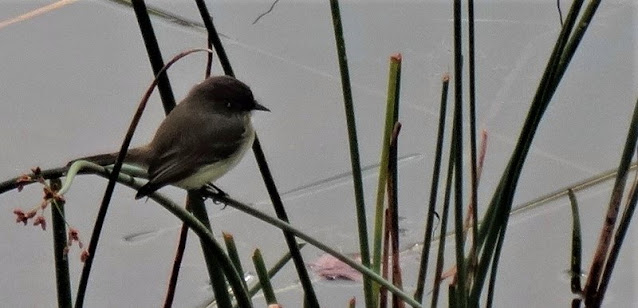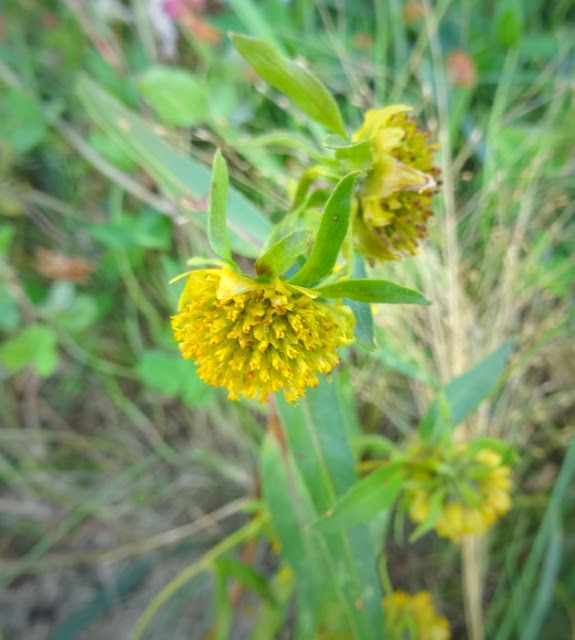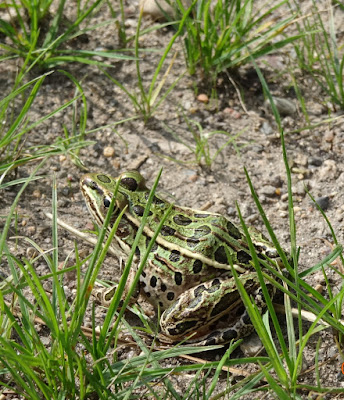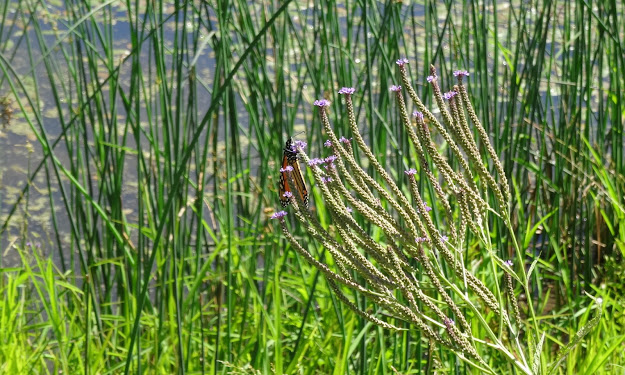
Phoebe is hunting at the pond today, balanced carefully on a reed bending over the water, with a reflection mirrored in the hazy sunlight.
Eastern Phoebes Sayornis phoebe are usually lone birds. Other than nesting season, one will rarely join another phoebe. They will sit upright and wag their tails from a low perch, looking for flying insects to eat.
They migrate south starting in September, wintering in the southern states. And, they are among the first migrants to return to their breeding grounds in spring, sometimes as early as March.




























